Week 1
Information asymmetry
You know something others don’t know.
Agency problem
Management control –> Aligning behavior
To ensure everyone works in a desired way
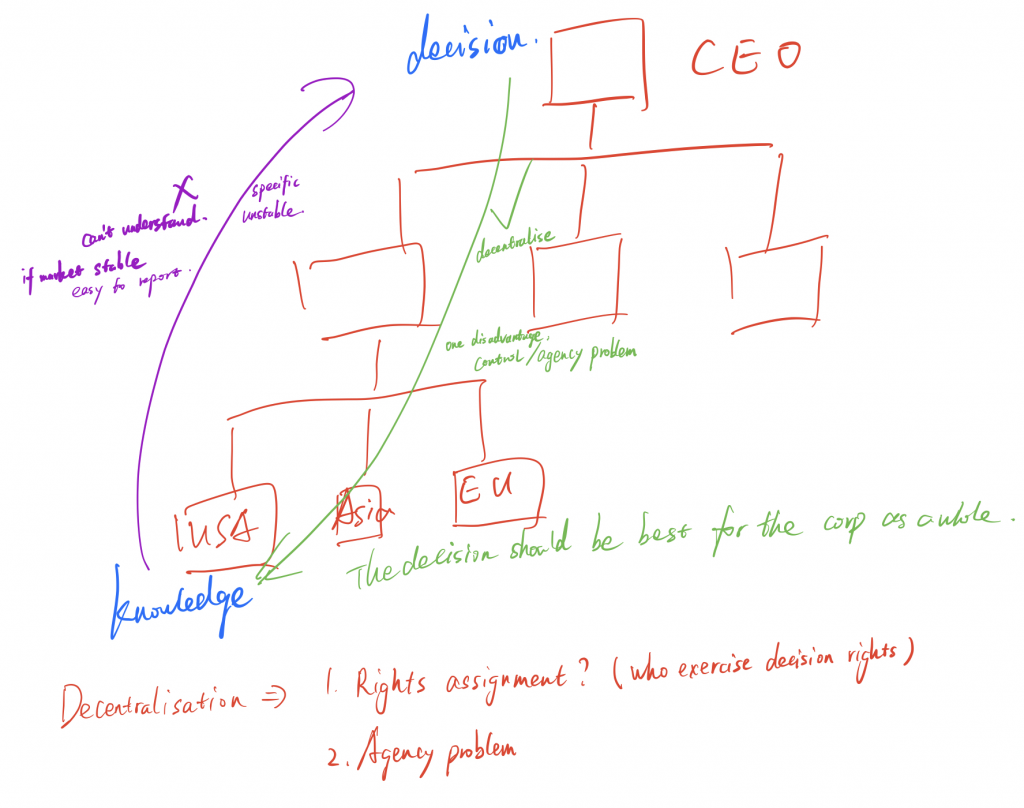
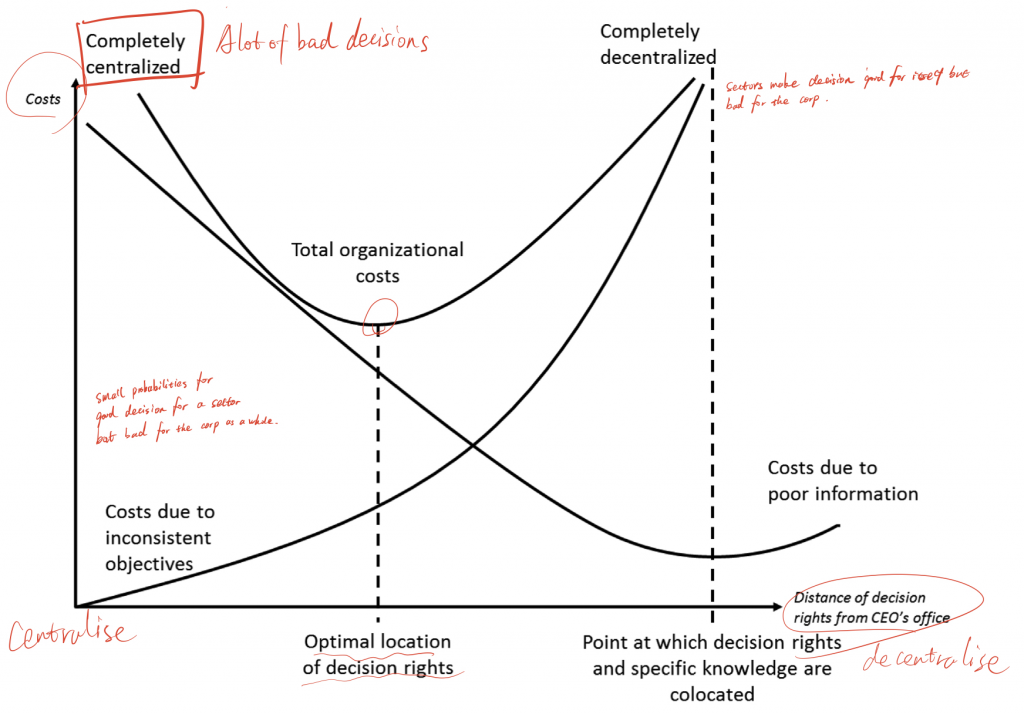
Cost of poor information
v.s.
Cost of inconsistent objectives
Three causes for misalignment:
- Lack of direction
- Lack of motivation
- Lack of ability
If decentralisation meets some problems, then there’re two ways to address problems:
- Avoid (Centralisation× , Eliminate/share risk×)
- Use of comprehensive management control system
Management control system:
- Result controls (Performance measures and reward/punish)
- Action controls (Do not look at results, info asymmetry cannot use this)
- Personnel and culture controls (hire right people, automatically motivated)
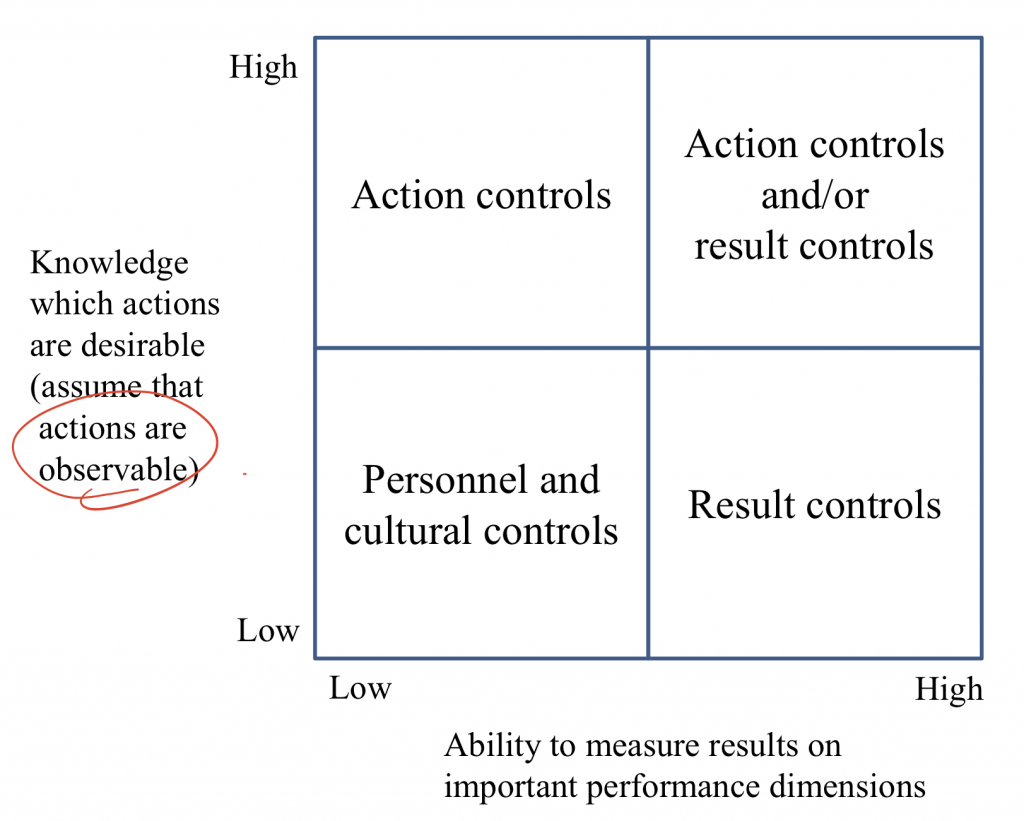
Result controls
It’s employees’ freedom to choose their actions.
Holding employees accountable for delivered results. (Reward / Punish)
Employees who is held accountable must be able to influence the results in a material way.
External situation (Noise)
–> Low performance
–> Risk is imposed on employees
–> Risk premium
–> More costly
Abernethy et al. 2004
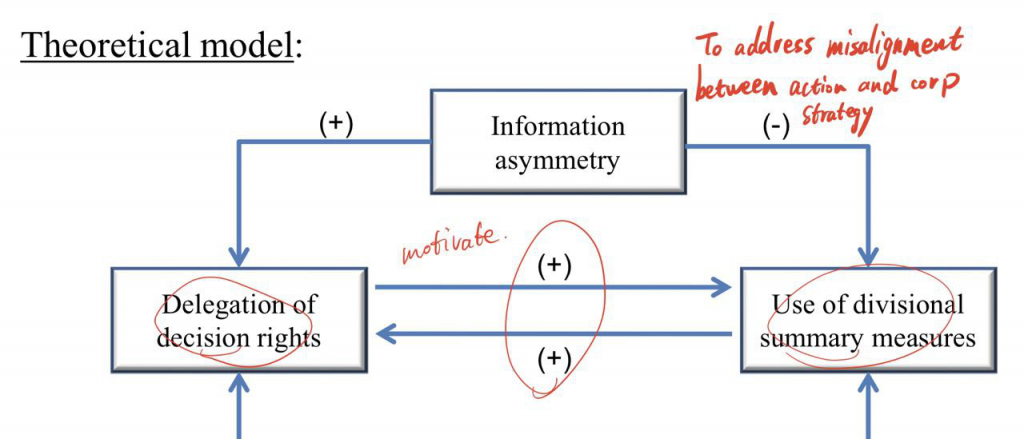
Action controls
Immediate controls
Personnel controls
builds on self-control
hiring the right people, behavior like corp’s objectives
Campbell 2012
Cultural controls
Builds on mutual monitoring
People monitoring each other
J&M 1976
Widener et al. 2008
Costs and benefits of control systems
Benefits: accomplishment of organizational objectives and strategies
Cost: Bonuses paid, Shareholder can never perfectly align interests of all people.
Bouwens & Kroos 2019
Week 2
Contingency theory
No universally best management control system that applies to all situations and all organizations
Different methods should be applied to different environment or situations.
Management control system should be designed according to strategy, external environment, technology, org structure, firm size, culture, etc.
Strategy: Corp strategy & Business strategy
Corp strategy ==> Diversification
Unrelated diversification ==> More information asymmetry
==> Lower decision level & Low-level result controls
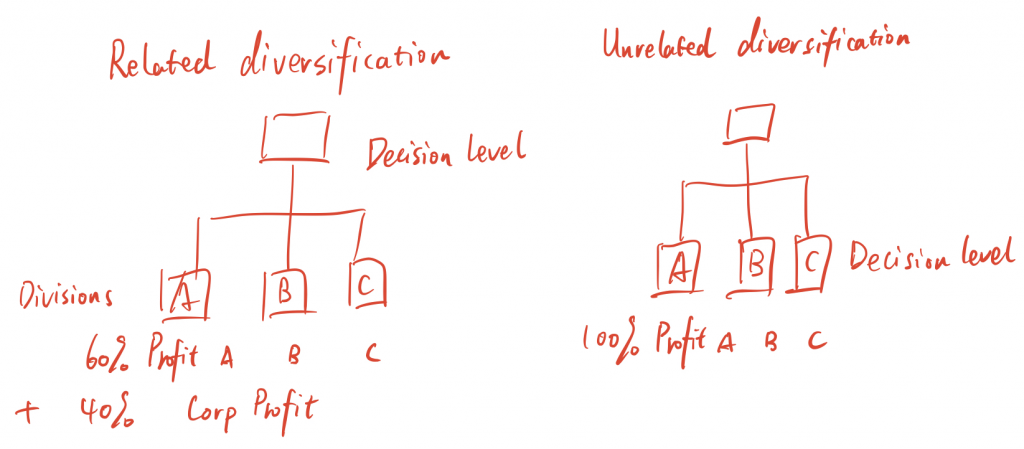
Business strategy: Cost leadership or Differentiation
- Cost leadership: Tight result controls & Tight action controls
- Differentiation: Result controls related to customers & Less action controls & More personnel and cultural controls
Culture: Countries
Grabner & Moers 2013
MC package as a way to address multiple MC practices simultaneously.
Performance implications
Ittner et al. 2003
Contingency vs. complementarity
Contingency focuses how individual MC practices fit with context and complementarities focus on how individual MC practices fit together (and with context).
Performance measures
Result control — Focus on outcomes of employee’s actions
Ideal situation: Individual contribution to firm value.
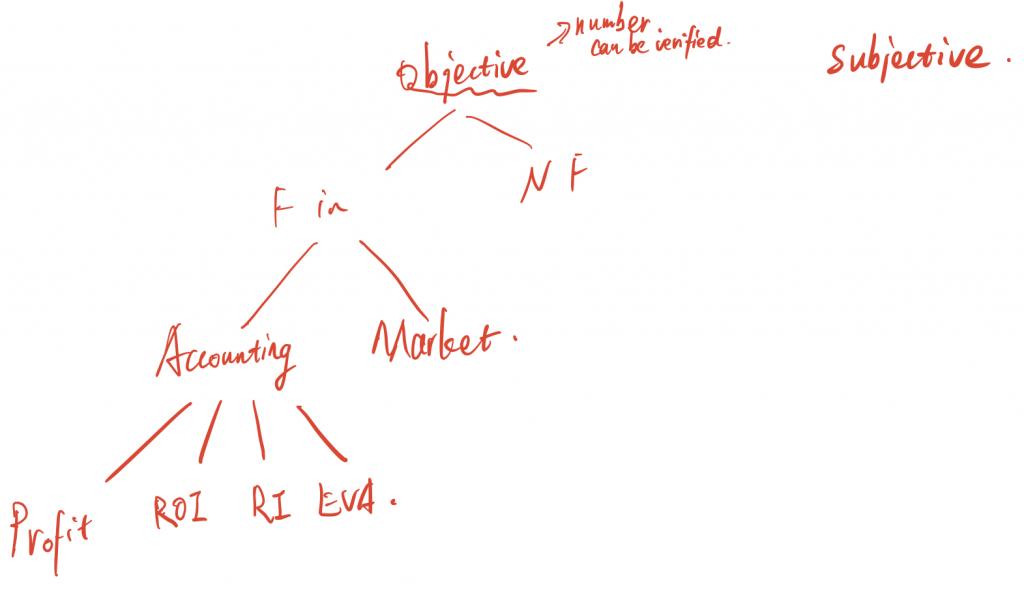
Criteria
– Sensitivity: to what extent can employee influence measure
– Noise: to what extent is measure influenced by other, external factors
– Congruence: to what extent does increase in measure leads to increase in firm value
– To what extent is measure susceptible to manipulation
Market performance measures
In efficient market, stock price should reflect future cash flows and risk.
Not look at the back but forward-looking
- For executives
- Noisy due to external factors
- Congruent
Accounting performance measures
- Available at many levels (Firm / divisional)
- Facilitate autonomy for lower-level managers
- Sensitivity ↑ (If divisional manager has decision right
- Less noise
- Weak congruence
Weak congruence of accounting measures
– Referred to as backward looking measures (i.e., reflect economic impact of decisions made in the past)
– Due to conservative nature of accounting, poor matching current investments with future benefits
– ‘Price leads earnings’
– Ignores economic value generated if this cannot be measured accurately and objectively (e.g., intangible assets)
Week 3
Accounting measures are less susceptible to noise compared to market measures because they’re based on what have been realized.
Market measures are more congruent.
Accounting measures cannot objectively presents firm’s true value.
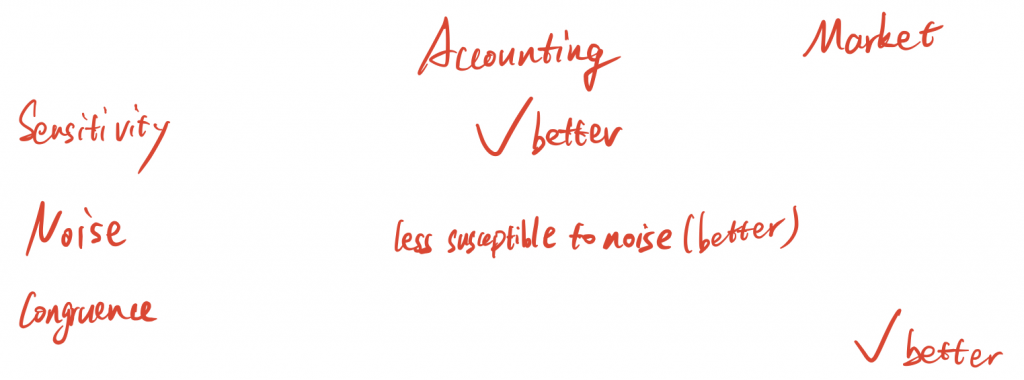
Residual Income
RI = Profit – ( CoC * CAP )
Economic Value Added EVA
EVA = Mod Profit – ( CoC * Mod CAP)
Examples of modifications:
• profit reflects capitalization and amortization of intangible investments in R&D and marketing
• Invested capital includes capitalized intangibles
Assume all R&D expenditure are capitalised.
Indjejikian & Matejka 2012
Non-financial measures
Non-financial measures provide more information about whether we are on the right way for the future.
Ittner et al. 1997
Banker et al. 2000
Dechow & Sloan 1991
Wallace 1997
Week 4
- Combination of performance measures: Accounting + Non-finanical
- To set target
- To give bonus as incentives
Performance measures
Non-financial measurement concerns
It’s difficult to adequately measure non-financial measures. They are susceptible to manipulation. It’s likely that extremes are picked up in the measurement.
Ambigious
Difficult to compare across companies and time.
Relation between non-financial measures (E.g. customer satisfactions) and performance (Revenues) may not be positive.
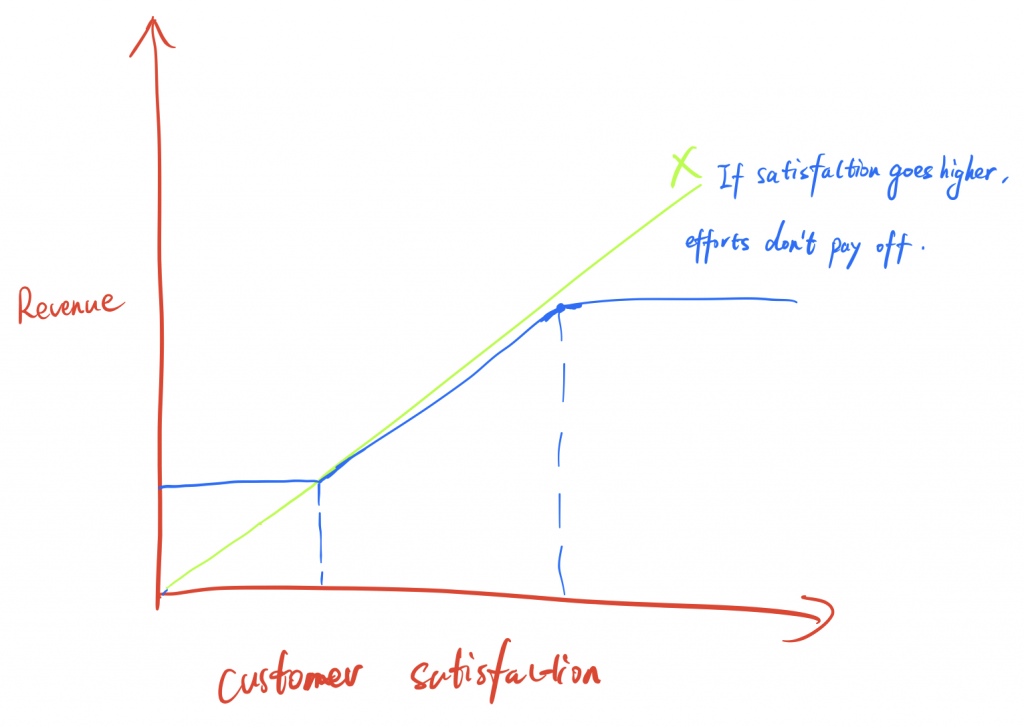

Asymmetry: negative response dissatisfied customer exceeds positive response of satisfied customer
Dissatisfied customers are more likely to make their views known than satisfied customers. (Asymmetry)
Not susceptible to noise.
Non-financial measure itself is snot congruent, but it is congruent when applied with accounting measures. It can affect future accounting measures.
Combination: Accounting + Non-financial
Backward-looking + forward-looking
Subjectivity
- Judgment based on personal impressions
- Not verifiable
- Often qualitative
3 ways:
- Subjective measures
- Subjective weighting (Subjectively decided weight between different objective measures)
- Ex-post subjectivity
Reasons:
- Because some actions cannot be adequately measured in an objective fashion.
- Mitigating potential incongruence effects
- E.g. Whether lowered R&D
- Reduction of risk imposed on managers
- E.g. Recession, Although not realize the target, manager can still get bonus.
Costs:
- Inaccurate
- Supervisor may renege on his pledges
- Uncertainty about measurement creteria
Transfer pricing
Tax rates
Division A acts beneficial to A itself but not beneficial to firm as a whole.

Market price
Liquid market –> reliable price
- Assume TP is lower than market price, then B is happy and A is not happy (prefer to sale externally)
- If A has excess capacity, TP can be lower than MP due to recovered fixed cost.
Variable cost
A decide manufactured less fixed cost
Full cost
Transfer all cost to B
Target setting

Bol et al. 2010

Relative performance evaluation
Purpose: Filter out common noise
Some factors that impact your performance also impact performance of other units.
Gong et al. 2011
Campbell 2005
Gibbs et al. 2004
Week 5

Incentives
Functions
- Effort effect: Incentivise people to work hard
- Selection effect: Characters (Non-risk-reverse or risk-reverse) of employees determine the job they take. Select best people to do job.
- Retention effect: Cost to leave the company. To try to retain them in the firm.
Two choices
- How strong should the incentive be?
- What’s the duration of the incentive?
How strong?
- More suitable if performance measurements are of high quality. (High congruence, low noise)
Determinants:

- Impact to the company
- Monitoring difficulty: If more difficult to monitor CEOs, provide more incentives to ensure the alignment.
- Riskiness: More risks from outside, less incentives.
Short-term or long-term
Earnings or Stock price
Salary
Salary is at a fixed amount. It does not provide incentives.
Why pay a little more than the industry?
To create a cost of job loss.
Annual bonus plan
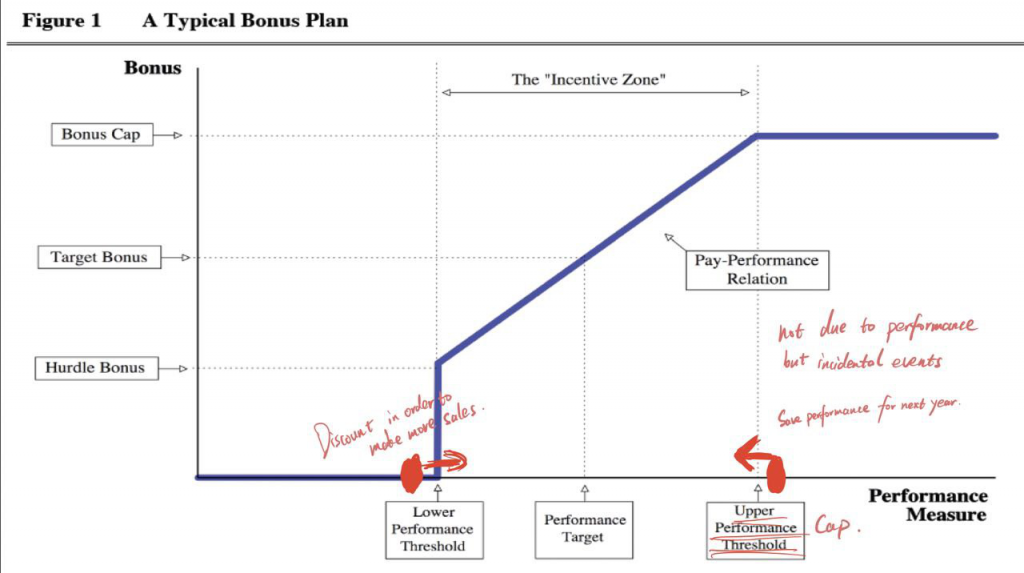
Equity incentives
Grant: What you get in a certain year
Portfolio: The possession of options and stock at the year end
Motivation:
- Give incentive to increase future stock price
- A compensation to past performance
Restricted stock: Trading is restricted for several years
Option: Right to buy in future years.
Equity incentives are poorly aligned with return of shareholders.
If bad performance, result is mainly borne by external shareholders.
Options: Common sense (only upward potential, but no downward risk), Incentivise riskier projects due to potential larger variation
Coles et al. 2006
Dismissal
- Poor performance
- Costs of job loss
Promotions
Promotion-based incentives
Grabner & Moers 2013b
Group-based incentives
Clawback
Kroos et al. 2017
Week 6
Corporate governance
- Shareholders use CG to safeguard their interests.
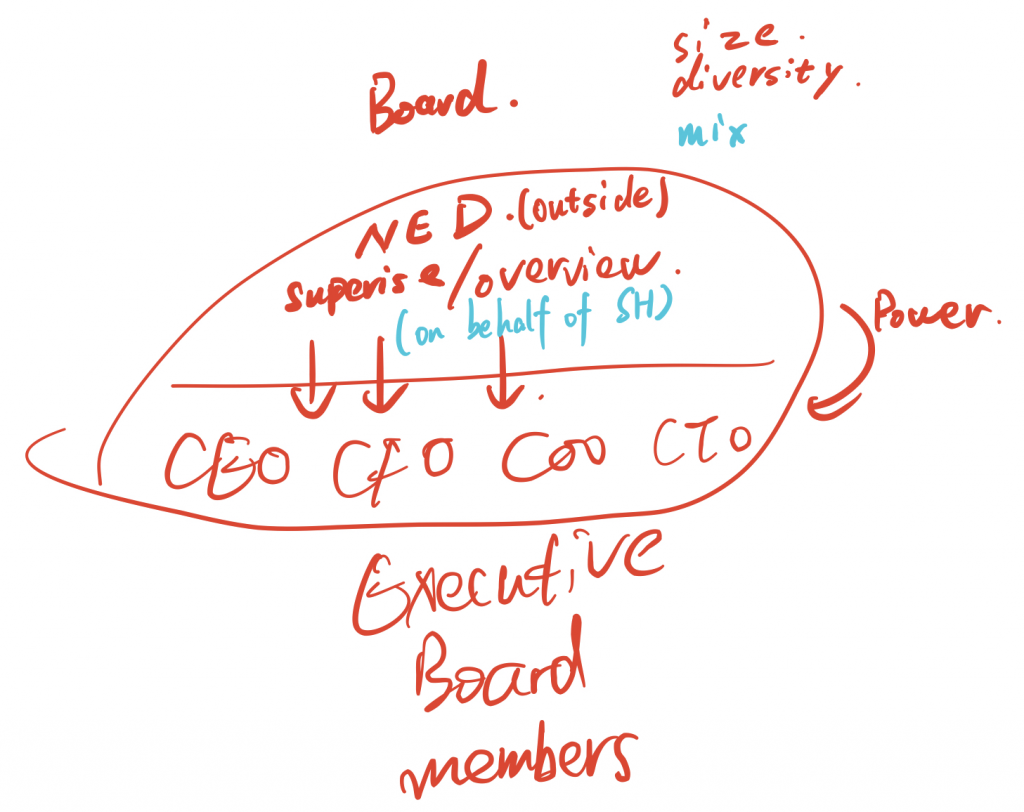
Compensation committee
- Often supported by external compensation consultants (NED)
- Quality –> % of outside members (NED)
Armstrong et al. 2012
External governance
- Market
- Institutional shareholders
- Audit quality
